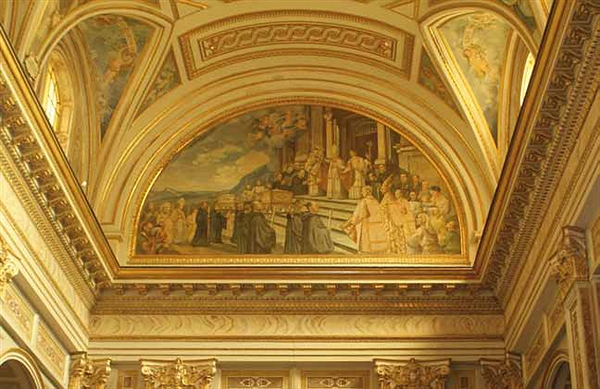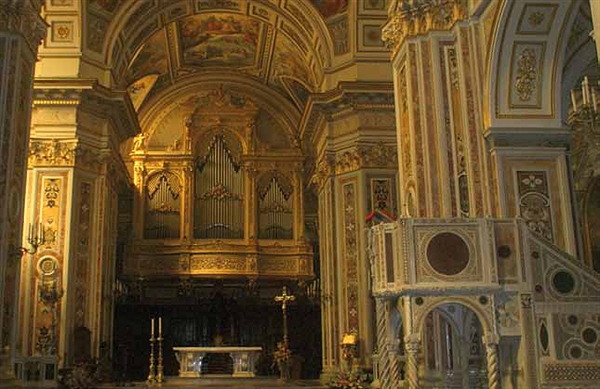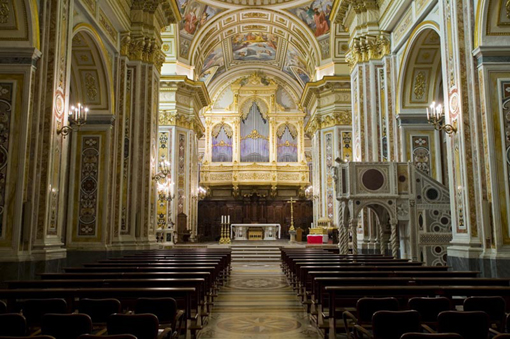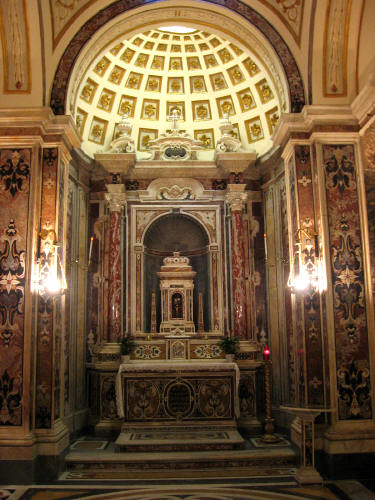La Trinità della Cava, commonly known as Badia di Cava, is a Benedictine territorial abbey located near Cava de’ Tirreni, in the province of Salerno, southernItaly. It stands in a gorge of the Finestre Hills.
It was founded in 1011 by Alferius of Pappacarbona, a noble of Salerno who became a Cluniac monk and had lived as a hermit in the vicinity since 1011.
Pope Urban II endowed this monastery with many privileges, making it immediately subject to the Holy See, with jurisdiction over the surrounding territory.
The monastery was closed under Napoleon but the community remained relatively unscathed, thanks to Abbot Carlo Mazzacane, and was restored after his fall. The abbey still provides the surrounding parishes with clergy.
The church and the greater part of the buildings were entirely modernized in 1796. The old Gothic cloisters are preserved. The church contains a fine organ and several ancient sarcophagi.
The monastery contains rich archives of public and private documents, which date back to the 8th century, e.g., the Codex Legum Longobardorum of 1004 (the oldest digest of Lombard law), and the La Cava Bible and fine incunabula. The monastery later became the seat of a national educational establishment, under the care of the Benedictines.
The church of the monastery has the tombs of Queen Sibylla of Burgundy (died 1150), second consort of King Roger II of Sicily, and a number of notable ecclesiastics.
For more information consult: Wikipedia





